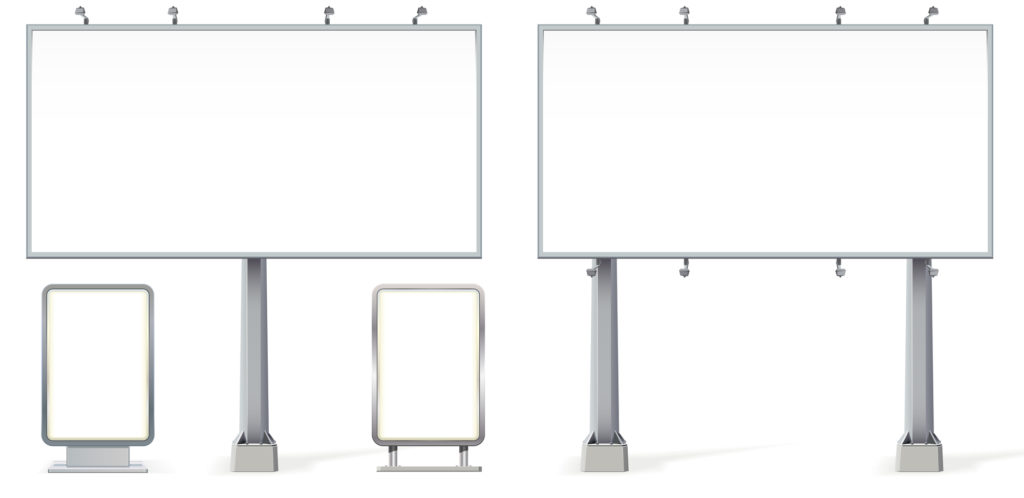Today, there are many different avenues of out-of-home (OOH) advertising. From trendy point of sale displays to beautifully designed wallscapes – advertisements are everywhere. However, one of the most recognizable methods of outdoor marketing that has been around since the 19th century is the billboard.
More than just an enormous sign seen on the freeway, a billboard has the ability to capture the attention of a consumer while leaving a lasting impression that is not only favorable toward the product or service being advertised, but is also likely to move the consumer to take action and purchase.
What is a Billboard?
By definition, a billboard is simply a large outdoor board for displaying advertisements. It is meant to target and attract the attention of consumers in surrounding areas. Billboard advertising is an effective way for businesses to build awareness and broadcast their brand. Many studies show that consumers view out-of-home advertising, like billboards as an enhancement to their outdoor experience making it an acceptable and effective way to advertise. Billboards come in many different forms, such as:
-
- Static: the billboards that you generally see on the side of the road of major highways and freeways, are called static billboards. These displays are flat and are not meant to be aggressive or directly in your face.
- Digital: digital billboards have the ability to change and display ads for multiple brands at one time. They tend to be more captivating than a standard, static billboard and can be found in large cities or on the side of bustling freeways.
- Interactive: a marketing promotion that requires interaction from passing consumers are known as interactive billboards. Typically found in densely populated urban areas, malls, shopping centers and transit areas, these billboards work to capture the immediate attention of consumers passing by to get them to interact.
Billboard Sizes
Billboards are an extremely effective way to advertise. In fact, research suggests that around 68% of consumers make their shopping decisions while in their car or walking down the street. However, if you are thinking about this avenue of outdoor advertising, it is important to become familiar with not just the different types, but the different sizes of billboards as well.
Bulletin Billboards
The largest standard billboard size is known as the bulletin. Sure, there will always be some media owners who own boards that are much larger, but those are considered non-standard, specialty billboards. When comparing the sizes of standard billboards, the bulletin is the biggest coming in at fourteen feet high and forty-eight feet wide. This monster board gives brands 672 square feet of advertising space.
Posters
The second largest in size is known as poster-sized billboards. Although these billboards might be a little smaller than the bulletin, they are still quite large. They are generally ten feet tall by twenty-two feet wide, providing businesses with 220 square feet of advertisement space. Posters are typically placed in locations where larger bulletin billboards do not fit.
Junior Poster
Rounding out the three main sizes of the standard billboards are junior posters. These billboards feature many different sizes making it difficult to list the standard size, however the rule of thumb is that a junior poster allows for about 11% of the advertising space provided by a bulletin billboard. It might sound too small, but junior posters are an excellent way to advertise to smaller, suburban, and urban environments, near retail space to increase foot traffic.
A Final Word
Billboards have been around for decades and for good reason! They are one of the most effective ways to reach your audience to promote your brand. If you are considering billboard marketing, take into account your business goals and who your target market is when deciding which size would be best for you.




